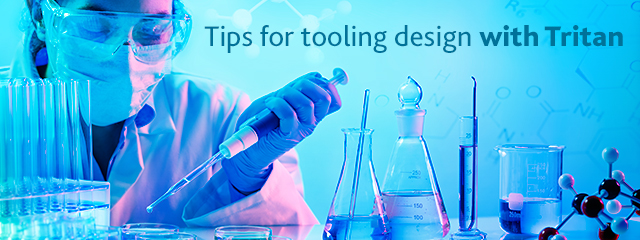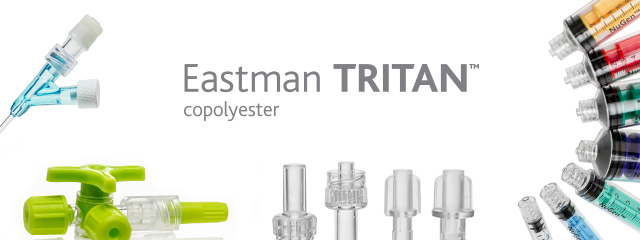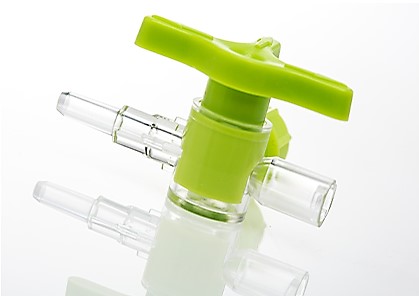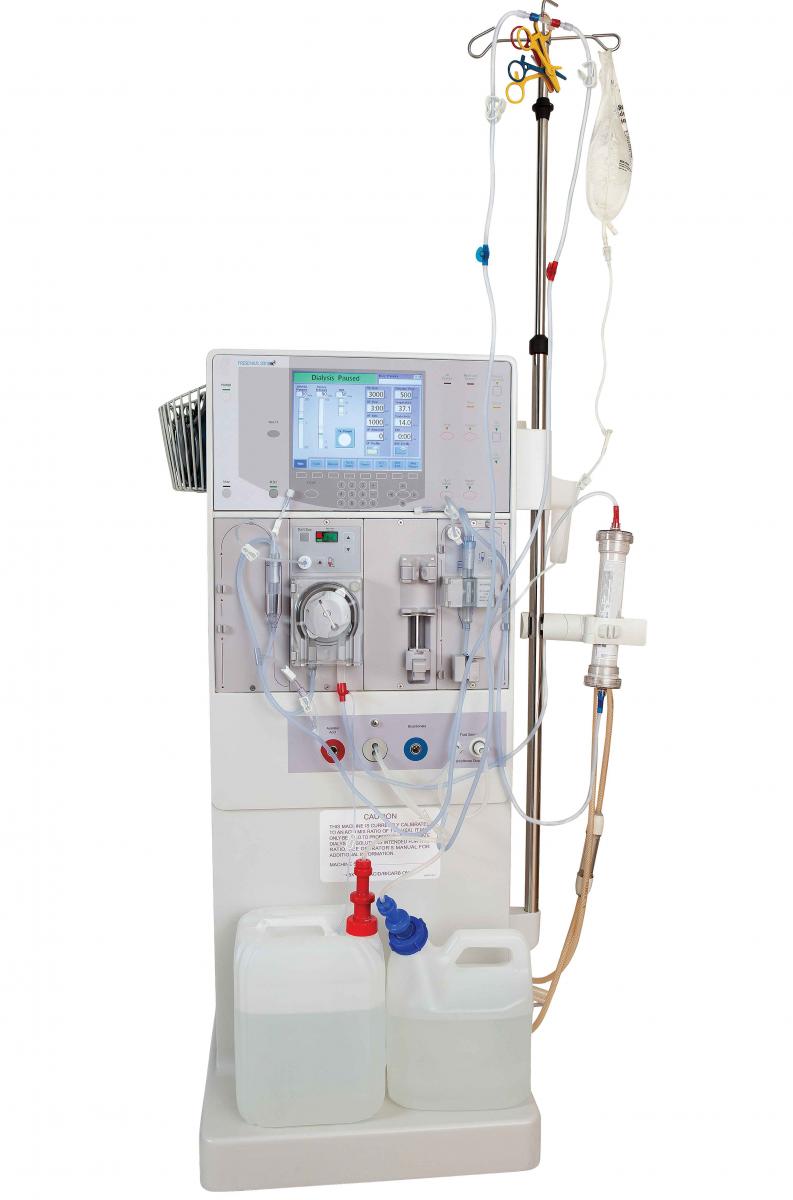How material choice impacts IV pump failures

NOTE: We appreciate you being part of our TritanMoldIt community! To ensure we are covering the information you need to best serve your customers and advance your business, we invite you to fill out this brief survey. As a thank you, you will have the option to be entered in a drawing for an Amazon Echo Show!
In examining why devices fail, it’s crucial to understand what happens when they are exposed to disinfectants and other harsh chemicals during cleaning. Constant exposure to many of these chemicals can damage a device’s structure — causing cracks, crazing, discoloration, and stickiness — and lead to compromised device performance, longevity, and ultimately, safety.
- Read more about How material choice impacts IV pump failures
- Log in or register to post comments
The effect of electron beam sterilization on Eastman Tritan™

Compared to gamma radiation, e-beam radiation typically costs less due to higher dose rates that reduce the time of exposure at the same target dose. The shorter exposure time also minimizes the oxidation reactions that can occur at the polymer surface, resulting in less effect on resin properties than with gamma radiation.
- Read more about The effect of electron beam sterilization on Eastman Tritan™
- Log in or register to post comments
Tips for tooling design with Tritan

What makes for effective molding of Eastman Tritan™ copolyester? Reviewing all aspects of design—from concept to secondary operations—early on in the process is crucial to end-stage success.
Tooling design review is one important step in the process that will help determine what type of gating system is right for your device. Here are four quick tooling design tips for injection molding with Tritan:
Tooling design review is one important step in the process that will help determine what type of gating system is right for your device. Here are four quick tooling design tips for injection molding with Tritan:
- Proper gating selection
Select a compatible gating style for the selected resin. Most conventional cold gating styles work well with Tritan copolyesters, including sub, pin, fan, edge, sprue, and diaphragm gates.
- Design tooling with good cooling/thermal control
Copolyesters require good thermal control throughout the cavity for optimal processing.
- Design tooling with a plan for venting
- Read more about Tips for tooling design with Tritan
- Log in or register to post comments
Navigating the complexities of compatibility with oncology drugs

The need to mitigate infection risks and enhance patients’ safety and comfort has significantly increased the demand for higher-performing plastics with improved chemical resistance. Many polymers commonly used in drug delivery devices simply do not hold up to modern oncology chemotherapies. After exposure to chemicals in the medical environment, devices made with these polymers can experience environmental stress cracking or premature failure in the presence of applied or residual stress.
Broken devices put patients at risk. What’s more, regulatory agencies may tell manufacturers to stop using certain materials when device performance or life cycle is compromised.
- Read more about Navigating the complexities of compatibility with oncology drugs
- Log in or register to post comments
Eastman Tritan™ copolyester—superior attributes for medical devices

Eastman Tritan™ copolyester is raising the bar for durability and cleanability in medical devices and housings. BPA-free Tritan’s attributes include exceptional clarity, toughness, improved heat and chemical resistance, and more. It’s also easy to process due to its unique chemical makeup relative to traditional thermoplastics. This blend of processing and performance properties provides greater advantages compared with other commonly used polymers. Available in clear and opaque formulations, Tritan offers many benefits to enhance innovative device designs:
Clear formulations of Tritan
- Greater toughness, heat resistance, processability, and design freedom
- Read more about Eastman Tritan™ copolyester—superior attributes for medical devices
- Log in or register to post comments
Educating product managers on how plastics affect your brand

The material you choose for your medical devices can have a big impact on your brand’s image. In today’s healthcare environment, not all plastics can withstand exposure to the aggressive disinfectants being used in hospitals. If your device is showing outward signs of suffering from exposure to effects of disinfection, including yellowing, cracking, crazing, or paint peeling, it’s time to reconsider material selection.
- Read more about Educating product managers on how plastics affect your brand
- Log in or register to post comments
Keys to classifying failures for quality engineers

Medical device failures are a common—and costly—occurrence. They can lead to a product recall, affect the product development cycle, and result in extra expenses for manufacturers. The reasons devices fail can be complex, making it difficult for quality engineers to classify the problem.
What can quality engineers do to remedy this problem? Consider these factors:
- Understand why failures occur: Most device failures are caused by a misunderstanding of how a material’s properties, processing, and environment work together. In many cases, failures can result from a combination of wrong material selection, poor chemical resistance, high-stress design, or inconsistencies in manufacturing processes.
- Collaborate with your supplier: Working with material suppliers on material selection, testing, part and tooling design review, and secondary operations can give quality engineers access to knowledge and resources they may not otherwise have.
- Read more about Keys to classifying failures for quality engineers
- Log in or register to post comments
A safer connection for stopcocks
Drug- and lipid-resistant polymers are playing an increasingly important role in enhancing patient safety. Stringent sterilization techniques can cause cracking, crazing, and hazing in commonly used plastics. They can also have a yellowing effect on certain polymers, which can impact color-coding systems in connector applications.
Eastman Tritan™ copolyester is resistant to a wide array of medical fluids, such as oncology drugs, drug carrier solvents, and lipids. Along with its toughness, low residual stress, and color stability post-sterilization, Tritan is an excellent choice for fluid management components.
Regulations in the medical market are constantly changing. When Elcam Medical, a world-class manufacturer of disposable medical devices for the OEM market, wanted to further improve the safety and efficacy of its fluid management devices, they turned to Eastman to find a polymer that complies with new regulations while still optimizing performance.

Eastman Tritan™ copolyester is resistant to a wide array of medical fluids, such as oncology drugs, drug carrier solvents, and lipids. Along with its toughness, low residual stress, and color stability post-sterilization, Tritan is an excellent choice for fluid management components.
Regulations in the medical market are constantly changing. When Elcam Medical, a world-class manufacturer of disposable medical devices for the OEM market, wanted to further improve the safety and efficacy of its fluid management devices, they turned to Eastman to find a polymer that complies with new regulations while still optimizing performance.
- Read more about A safer connection for stopcocks
- Log in or register to post comments
Secure connections for safer devices
 Small-bore connectors are important components of many enteral feeding devices. Good design is critical, as tubing misconnections or failure can put patients at risk for serious injury or death.
Small-bore connectors are important components of many enteral feeding devices. Good design is critical, as tubing misconnections or failure can put patients at risk for serious injury or death.Global design standards for tubing connectors are now helping improve patient safety and device efficacy. ISO 80369 requires small-bore connectors to be made of semirigid and rigid materials, making incorrect interconnections less likely. Enteral devices were the first of all the clinical applications to undergo this change.
To meet this standard, you may have to adjust your design, which means you may need a new mold or new materials. Eastman Tritan™ copolyester is a rigid material with the properties needed to comply with these regulations.
- Read more about Secure connections for safer devices
- Log in or register to post comments
Polymer compatibility with oncology drugs
As part of the continued effort to improve cancer treatment, pharmaceutical companies are developing new and improved oncology drugs. However, advanced oncology drugs and  carrier solvents challenge the chemical resistance of polymers used in delivery devices. Such conditions can prevent devices from working properly or cause them to fail prematurely. When there is a pattern of compromised device performance or life cycle, regulatory agencies may tell manufacturers to stop using certain materials to protect patient safety.
carrier solvents challenge the chemical resistance of polymers used in delivery devices. Such conditions can prevent devices from working properly or cause them to fail prematurely. When there is a pattern of compromised device performance or life cycle, regulatory agencies may tell manufacturers to stop using certain materials to protect patient safety.
 carrier solvents challenge the chemical resistance of polymers used in delivery devices. Such conditions can prevent devices from working properly or cause them to fail prematurely. When there is a pattern of compromised device performance or life cycle, regulatory agencies may tell manufacturers to stop using certain materials to protect patient safety.
carrier solvents challenge the chemical resistance of polymers used in delivery devices. Such conditions can prevent devices from working properly or cause them to fail prematurely. When there is a pattern of compromised device performance or life cycle, regulatory agencies may tell manufacturers to stop using certain materials to protect patient safety.
- Read more about Polymer compatibility with oncology drugs
- Log in or register to post comments





 Close
Close


